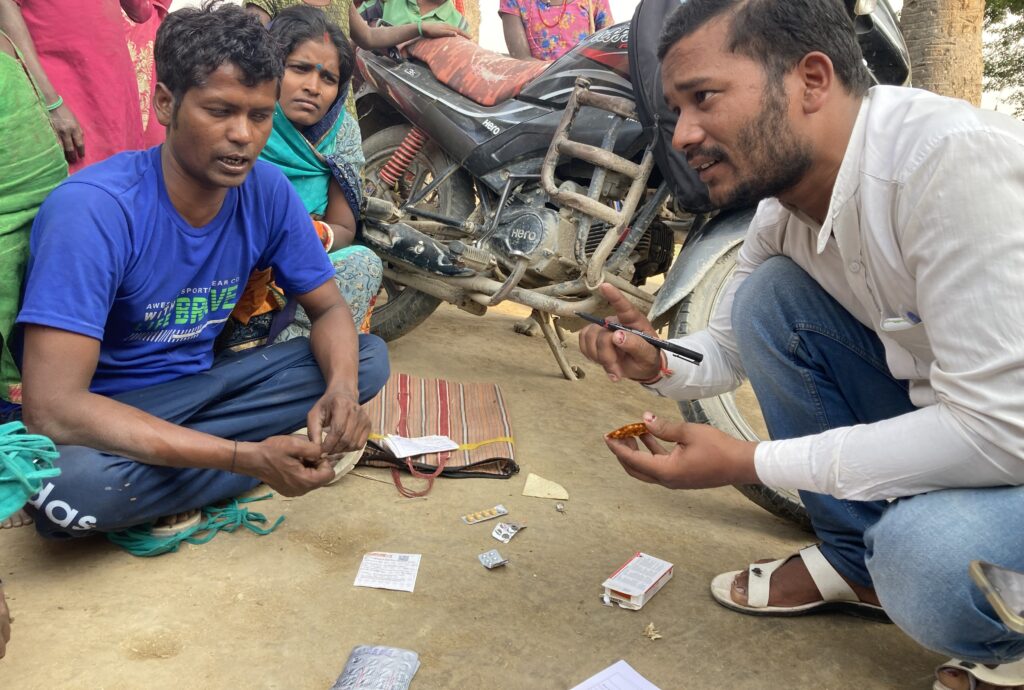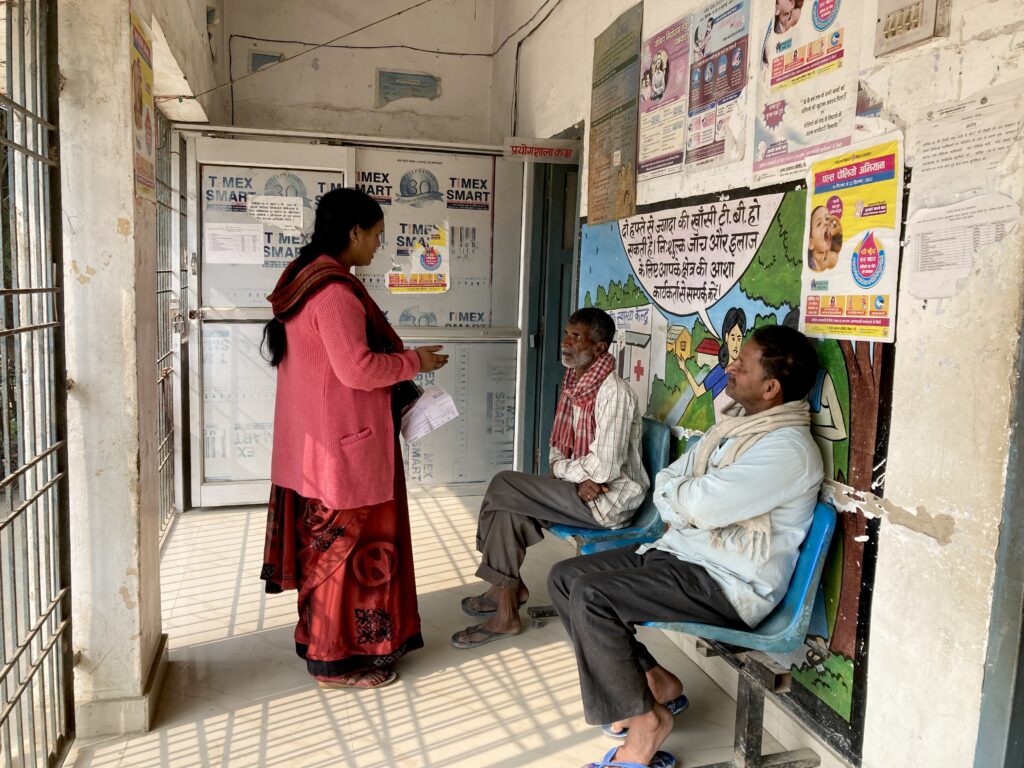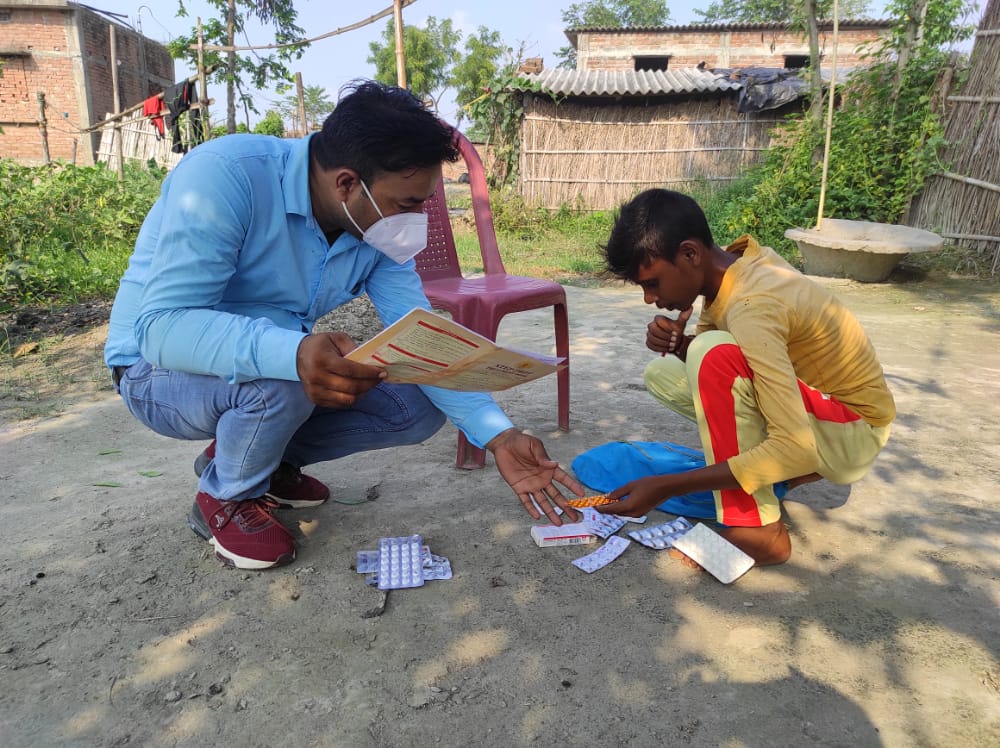I have been working for 18 months with Innovators In Health (IIH). The organization has been actively working on the ground for over 12 years now. They work to address public health issues like tuberculosis (TB) and maternal health. To understand IIH’s work in detail, to see where the challenges routinely occur, and then to further find solutions to those challenges we regularly undertake the collection of “survivor stories”.
Through these stories, we aim to investigate the entire journey a person with Tuberculosis (PwTB). The primary aim for compiling these patient journeys has been to understand the :
- challenges that emerge from this disease,
- the problems within the system that delays the diagnosis process,
- the complications that arise while consuming the medications, and
- the social and economic issues that ultimately grapple an individual suffering from the disease and their family at large.
We also wanted to become better aware of the problems that arise for our patients. This was in order to be able to create a programme that is not simply project-specific but rather empathetic to the true needs and requirements of our patients.

To give a background, our target population is located within the Indo-Gangetic plains of Northern Bihar. Most households are into agriculture for a living, the majority of them being landless laborers or small and marginal farmers. 17% of the population belongs to “scheduled castes” who face discrimination on social and religious grounds.
The average family size is 5 and the monthly income for a household is <65 USD – forcing them to live in abject poverty. Patriarchy, early marriages, endemic misogyny, and male-only distress migration further complicates this. 63% of the population is reported literate. However, our experiences and interactions with the communities show that levels of basic reading and writing are much lower.
Also read : Is It Possible To Eliminate Tuberculosis By 2025?
The daily wage that community members are engaged in has a high level of occupational health hazards associated with it. It ultimately compromises their health over a period of time. Along with that, the society is highly anemic making them particularly vulnerable to diseases, Tuberculosis being among the most prevalent.
It is the already existing challenges that our communities go through on a daily basis that get exasperated during times of compromised health. Although TB diagnosis and treatment are free of cost within government hospitals, members of our community end up incurring a high opportunity cost. Whenever they have to visit a public healthcare facility having to leave behind those many days of work. Our experience also suggests that nearly 70% of healthcare is channelized through Informal Healthcare Providers (IHP). These private practitioners are often not aware of new treatment methods, leaving patients in dire situations.
What has been extremely special for me has been that our field members have documented these journeys. Our field members have been more than just a confidant for our patients. These stories, therefore, highlight the journey that follows a person with Drug-Resistant TB (DRTB). Often starting from the point their symptoms first emerged and till the time the treatment is finally suiting them. These journeys highlight societal discrimination, economic hardship, and severe drug reactions which often prolong treatment. Through our experiences, we noticed numerous trends. These are not only quite worrying but also have made us revisit our program design. They are as follows:
Rural Medical Practitioners or private physicians are the first point of contact
When the symptoms are reported, the first point of contact is always a Rural Medical Practitioner (RMP) or a private physician. These RMPs are located within the village and are often well-known to communities. Therefore there is immense trust in them despite the high cost incurred. Our experience has highlighted that these RMPs and private physicians are not entirely aware of new algorithms or treatment processes leading to misleading diagnoses.
Unawareness about TB diagnosis and treatment being free of cost in government hospitals
Communities are not often aware that TB diagnosis and treatment are free of cost at government hospitals. Along with this an important factor to highlight within the public health system is delayed diagnosis and treatment initiation. While all our patients in care highlight that once they have been associated with the government system, they have had to spend very less. But often there is constant follow-up, visits, and delayed response that results in an extremely high opportunity cost which is reduced if they visit an RMP or a private physician in the locality. Our learning along with the system has been to have an individual placed at these treatment initiation centers who hand-hold the patient and the family, reducing the time for initiation.

Extreme financial vulnerability
As a result of RMPs and private hospitals being the first point of contact, a person with DR-TB often becomes extremely financially vulnerable when they finally visit a government facility. It is seeing this vulnerability, that we understood the need for complete zero-cost treatment care for DR TB patients from the point of diagnosis till treatment completion covering all aspects of treatment – TB medications, managing adverse drug reaction medications as well as nutrition.
Extreme side-effects
One of the main issues highlighted by our patients as well as families is the extreme side effects due to the medications. As a result of which patients often drop their treatment mid-way. It is in-depth counseling regarding the medications and treatment processes at the point of initiation that helps patients, as well as families understand the process as well as prevent them from dropping the treatment.

A person with DR-TB faces challenges that are physical due to the disease. They face social challenges as a result of stigma and discrimination by the community at large. The mental fragility is due to both side-effects of the medicines but also due to the alienation. It is, therefore, important to provide care which looks at all three. This includes timely and accurate diagnosis, awareness of treatment procedure and necessary family and community support, and regular mental health screening and counseling. We are constantly learning through these experiences and regularly modifying our ways and means to approach DR-TB. And ultimately make sure a person with DR-TB is able to accurately complete their treatment, live a life free from alienation, and invariably able to become role models for the rest of their community.




0 Comments